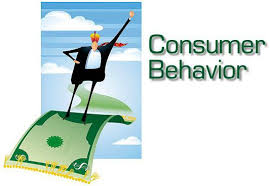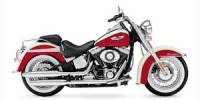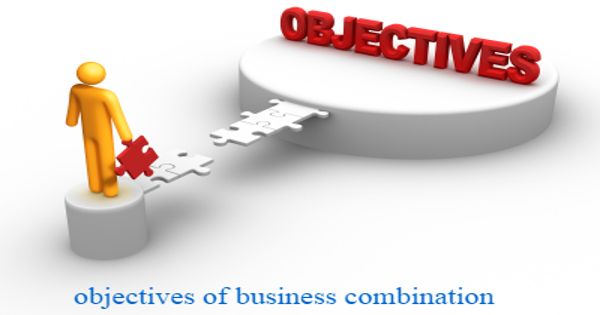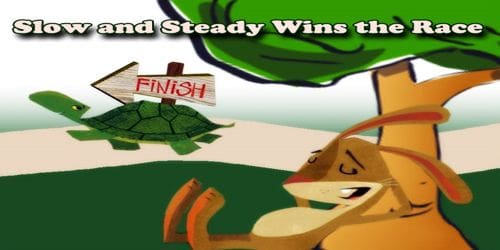Consumer Market and
Consumer Buying Behavior
Consumer behavior refers to the selection, purchase and consumption of goods and services for the satisfaction of their wants. There are different processes involved in the consumer behavior. Initially the consumer tries to find what commodities he would like to consume, then he selects only those commodities that promise greater utility. After selecting the commodities, the consumer makes an estimate of the available money which he can spend. Lastly, the consumer analyzes the prevailing prices of commodities and takes the decision about the commodities he should consume.
Consumer Behavior is the study of how individual make decisions to spend their valuable resources (time, money and energy) on consumption-related items. It includes the study of what they buy, why they buy it, where they buy it, how often they buy it, and how often they use it.
Take a simple example of the product “Soap”, consumer behavior researchers wants to know:
-what types of soap consumers buy (Strawberry, honey, moisture)?
– What brand (Lux, Aromatic, Dove)?
– Why they buy it (To wash the body from dirt, to wash dirt cloths)?
-Where they buy it (Supermarket, convenient store)?
– How often they buy it (weekly, bi-weekly, monthly)?
The answer to these questions can be found through consumer behavior study and can provide manufacturers with important input for product scheduling, design, modification and promotional strategy. Actually, the study of consumer behavior is highly interesting. It is an exciting field, but for two reason it is also complicated and difficult. First the behavior is of consumers are difficult to explain, it can’t understand fully. Secondly consumer behavior is so prevalent that it significantly affects our lives through either our own actions or those of others. However, in order to better understand the nature and scope of consumer behavior,
Definition of Consumer Behavior
Simply Consumer behavior involves the purchasing and other consumption-related activities of people. Consumer behavior is designed as the behavior that consumers display in searching for, purchasing, using, evaluating and disposing of products, services and ideas that they expect will satisfy their needs. In other words, Consumer behavior may be defined as the decision process and physical activity individuals engage in when evaluating acquiring, using or disposing of goods and services.
According to H.W. Barkman & C. Gilson, “Consumer behavior may be defined the activities people engaged in actual or potential use of market items- whether produce, services, retail environment or ideas”.
However, a more specific definition is given by Bagozzi and Zeltman, “Consumer Behaviors are acts, process and social relationship exhibited by individuals, groups and organization in the obtainment, use of and other resources”.
The above definitions focus on three aspects:
i) Activity: Acts, process, and social relationships
ii) People: Individuals, groups and organizations
iii) Experiences: Obtaining, using and consequences
Models of Consumer Behavior
A model can be defined is simplified representation of some larger system which is used to identify, explain and predict behavior within that system. All model of consumer behavior attempt to organize many variables and relationship in a meaningful way.
Basically, the study of consumer behavior is the study of how individuals make decisions to spend their valuable resources (time, money, effort) on consumption related items. It includes the study of what they buy it and how after they buy it, the consumer behavior model (stimulus response) helps to understand the above questions.
| Buyers Characters | Buyer Decision Process |
| Cultural
Social
Personal
Psychological | Problem recognition Information search Evaluation of alternatives Purchase decision Post purchase decision |
| Buyer’s decision |
| Product choice
Brand choice
Dealer choice
Purchase timing
Purchase amount |
| Marketing Stimuli | Other Stimuli |
| Product
Price
Place
Promotion | Economical
Technological
Political
Cultural |
Figure: Model of Buyer Behavior
The model shows that the marketing and environmental stimuli inter into the buyer’s consciousness. The buyer’s characteristics and decision process lead to certain purchase decisions. The buyer’s consciousness between the arrival of outside stimuli and the buyer’s purchase decisions.
Factors influencing Buying Behavior
Consumer behavior refers to the selection, purchase and consumption of goods and services for the satisfaction of their wants. There are different processes involved in the consumer behavior. Initially the consumer tries to find what commodities he would like to consume, then he selects only those commodities that promise greater utility. After selecting the commodities, the consumer makes an estimate of the available money which he can spend. Lastly, the consumer analyzes the prevailing prices of commodities and takes the decision about the commodities he should consume. Meanwhile, there are various other factors influencing the purchases of consumer such as social, cultural, personal and psychological. The explanation of these factors is given below
1. Cultural Factors
Consumer behavior is deeply influenced by cultural factors such as: buyer culture, subculture, and social class. Thus marketer should understand the cultural background of the consumer. It includes:
(i) Culture
Basically, culture is the part of every society and is the important cause of person wants and behavior. Simply, culture is that, what we are. That means our life style, our behavior, what we like to do and wear all these show our culture.In a border sense, culture refers to a complex set of valus,norms believes, attitudes and customs which are handed down from generation to generation and which help individuals to communication, interpret or evaluate as members of a given society.
For xample as a Bangladeshi culture we feel comforte to wear lungi in the house or prefere to eat rice and fish in our meal. This is the culture of Bangladeshi people. The influence of culture on buying behavior varies from country to country therefore marketers have to be very careful in analyzing the culture of different groups, regions or even countries.
ii) Subculture
No society is totally homogenious. Each culture consits of smaller subcultures that provide more specific identification or common value system for their members. Each culture contains different subcultures such as religions, nationalities, geographic regions, racial groups etc. Marketers can use these groups by segmenting the market into various small portions. For example marketers can design products according to the needs of a particular geographic group.
iii) Social Class
Every society possesses some form of social class which is important to the marketers because the buying behavior of people in a given social class is not similar. In this way marketing activities could be tailored according to different social classes. Here we should note that social class is not only determined by income but there are various other factors as well such as: wealth, education, occupation etc. For example, In our society there is upper class, mid class and lower class people and their consumption pattern is not alike to each other.
2. Social Factors
In addition to cultural factors consumer behavior is influenced by such social factor as reference groups, family, and social roles and status.
i) Reference Groups:
Reference groups refer to group that have either a direct or indirect influence on a person’s attitudes, values, opinions and behavior. People are significantly influenced by their reference groups. Reference groups expose an individual to new behaviors and lifestyles. They influence attitudes and self-concept. And they create pressure for conformity that may affect actual product and brand choices. The impact of reference groups varies across products and brands. For example if the product is visible such as dress, shoes, car etc then the influence of reference groups will be high. Reference groups also include opinion leader (a person who influences other because of his special skill, knowledge or other characteristics).
(ii) Family
Buyer behavior is strongly influenced by the member of a family. Family is defined as two or more persons related by blood, marriage or affecting who reside together. Family members constitute the most influential primary reference group affect buying decision. However, the relative importance of each member may vary according to the kind of product or service under considertion, its cost and other variables. Therefore marketers are trying to find the roles and influence of the husband, wife and children. If the buying decision of a particular product is influenced by wife then the marketers will try to target the women in their advertisement. Here we should note that buying roles change with change in consumer lifestyles.
(iii) Roles and Status
Each person possesses different roles and status in the society depending upon the groups, clubs, family, organization etc. to which he belongs. The person’s position in each group can be defined in terms of roles and status. A role consists of the activities that a person is expected to perform. For example a woman is working in an organization as finance manager. Now she is playing two roles, one of finance manager and other of mother. Therefore her buying decisions will be influenced by her role and status.
3. Personal Factors
Personal factors can also affect the consumer behavior. Some of the important personal factors that influence the buying behavior are: lifestyle, economic situation, occupation, age, personality and self concept.
i) Age and Stage in the Family Life Cycle:
Age and life-cycle have potential impact on the consumer buying behavior. It is obvious that the consumers change the purchase of goods and services with the passage of time. For example: they eat baby food in the early years, most food in the mature years and special diets in the later years. Habit, taste, recreation is also age related. Consumption is also in influenced by the family life cycle. Marketers have identified nine stages of the family life cycle, e.g. bachelor stage, newly married couples, expanding-1, expanding-2, contracting, post-parental childless, childless older married, lone survivor (working), and lone survivor (retired).
(ii) Occupation and Economics Circumstance:
The occupation of a person has significant impact on his buying behavior. For example a marketing manager of an organization will try to purchase business suits, whereas a low level worker in the same organization will purchase rugged work clothes.
Product choice is greatly effected by economic circumstances disposable income, saving investment, borrowing power etc. For example, as inflation increases more money is requird for consumer to purchase the same amount of goods. This may lead to general discipline in consumer impending.
(iii) Lifestyle
Lifestyle of customers is another import factor affecting the consumer buying behavior. Lifestyle refers to the way a person lives in a society and is expressed by the things in his/her surroundings. It is determined by customer interests, opinions, activities etc and shapes his whole pattern of acting and interacting in the world. Marketer search for relationships between their products and lifestylegroups. For example, computer manufacture might find that most computer buyers are achivement-oriented.
iv) Personality and Self-concept:
Each person’s distinct personality influences his or her buying behavior. Personality refers to the unique psychological characteristics that lead to relatively consistent and lasting response to one’s own environment. Personality is usually described in terms of self-confidence, dominance, sociability, defensiveness and adaptability. There exist a strong correlation between certain personality types and product or brand choice. For example, women who view herself as beautiful will exhibit patterns of buying cloths and cosmetics than a woman who see herself uninteresting.
4. Psychological Factors
A person’s buying behavior is also influenced by the various psychological factors.These are: motivation, perception, learning, beliefs and attitudes.
i) Perception
Perception is the process by which an individual selects organizations, and interprets information inputs to create a meaningful picture of the world. One person might perceive a fast-talking salesmen as talkative or aggressive, while other perceive as intelligent or helpful. There are three different perceptual processes which are selective attention, selective distortion and selective retention. In case of selective attention, marketers try to attract the customer attention. Whereas, in case of selective distortion, customers try to interpret the information in a way that will support what the customers already believe. Similarly, in case of selective retention, marketers try to retain information that supports their beliefs.
ii) Learning:
When people act, they learn. Learning is the relatively permanent change in behavior due to experience. Most human behavior is learned. Learning theory teaches marketers that they can build up demand for a product by association it with strong drives, using motivating cues and providing positive reinforcement.
iii) Beliefs and Attitudes
Through doing and learning, people acquire beliefs and attitudes. These in turn, influence their buying behavior. A belief is a descriptive thought that person hold about something. Beliefs may be based on knowledge, opinion or faith. These beiefs make-up product and brand images, and people act on their images.
An attitude is a person’s enduring favorable or unfavorable evaluation toward some object or idea. Attitudes put individuals into a frame of mind of liking or disliking a product, motivating toward or away from it.
All of the factors are described above are crucially important for a marketer to understand . Because he must stisfy the customers according their needs and wants. Also he sometimes need to crate demand in customers mind. For this reason this is very much impotant for a efficient marketer to handle all of his customers more effectively and enthusiastically.
















